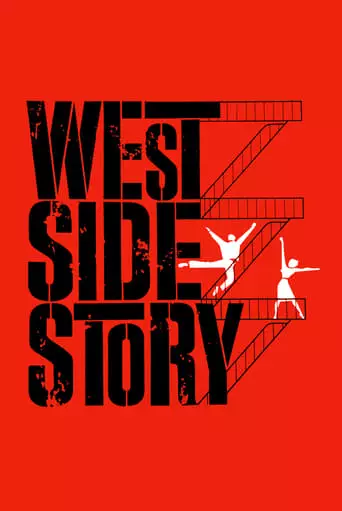In the slums of the upper West Side of Manhattan, New York, a gang of Polish-American teenagers called the Jets compete with a rival gang of recently immigrated Puerto Ricans, the Sharks, to “own” the neighborhood streets. Tensions are high between the gangs but two romantics, one from each gang, fall in love leading to tragedy.
“West Side Story” (1961) is a classic musical directed by Robert Wise and Jerome Robbins, based on the 1957 Broadway musical by Leonard Bernstein, Stephen Sondheim, and Arthur Laurents. It is a modern retelling of Shakespeare’s Romeo and Juliet, set in the vibrant yet volatile streets of New York City. The story revolves around two rival street gangs: the Jets, a group of white American youths, and the Sharks, consisting of Puerto Rican immigrants. Amidst this cultural conflict, Tony, a member of the Jets, and Maria, the sister of the Sharks’ leader, fall in love, setting the stage for a tragedy that unfolds from their forbidden romance.
Plot and Analysis: At the heart of West Side Story lies the intense racial and cultural tensions between the two groups. The movie’s plot explores how these tensions lead to violence and the tragic consequences of prejudice. The musical numbers, ranging from the lively “America” to the soulful “Somewhere,” not only provide entertainment but also deepen the emotional engagement of the audience. Tony and Maria’s love story acts as a powerful metaphor for the desire for peace and unity in the face of divisive forces.
The film is a stunning visual and musical masterpiece, with choreography by Jerome Robbins that uses dance as a powerful storytelling device. The violent street brawls, contrasted with the tender romance of the protagonists, depict the clash between youthful exuberance and the harshness of societal conflict. Through stunning cinematography and sweeping music, the film highlights the destructive nature of racism and the futility of hate, all while offering a glimpse of hope through the young couple’s dreams of a better world.
Themes:
- Love vs. Hate: The central theme of the film is the tension between love and hate, embodied in the relationship between Tony and Maria, which symbolizes the yearning for peace amidst societal conflict. Their love is pure and untainted by the racial divisions that plague their world, yet it is tragically doomed by the forces of hate and bigotry.
- Racism and Prejudice: The film delves deeply into issues of racial discrimination, focusing on the struggles of Puerto Rican immigrants who face hostility from the American-born Jets. This theme is depicted not only through direct conflict but also through the characters’ emotional struggles and aspirations.
- Violence and its Consequences: The film underscores the cyclical nature of violence. As tensions between the gangs escalate, so does the violence, leading to irreversible consequences. This theme reflects the senseless nature of racial hatred and its capacity to destroy lives and dreams.
- Social Inequality: West Side Story also touches on themes of social class, immigration, and the pressures of living in an economically disadvantaged urban environment. Both gangs are portrayed as products of their circumstances, with the Jets resentful of the Sharks’ presence and the Sharks striving to overcome their outsider status.
- Youthful Aspirations and Disillusionment: The characters, particularly Tony and Maria, represent youthful optimism, seeking a future free from societal constraints. However, their hopes are tragically dashed by the harsh realities of their environments, highlighting the tension between youthful dreams and the limitations imposed by society.
10 Reasons to Watch:
- Timeless Story: The central theme of forbidden love amidst societal divisions continues to resonate today, making the film relevant across generations.
- Iconic Music: Leonard Bernstein’s score and Stephen Sondheim’s lyrics create some of the most memorable and emotionally powerful musical moments in cinema history.
- Groundbreaking Choreography: Jerome Robbins’ choreography, especially in the fight scenes and dance numbers, sets West Side Story apart as a visually stunning film.
- Stellar Performances: Natalie Wood as Maria and Richard Beymer as Tony deliver unforgettable performances, capturing the innocence and passion of their characters.
- Symbolic Use of Setting: The urban landscape of New York, with its alleys and rooftops, is used symbolically to represent the division and potential for escape from societal constraints.
- Strong Social Commentary: The film critiques racism, immigration issues, and social divisions, making it a thought-provoking piece even in the modern era.
- Cinematic Innovation: The use of color, camera angles, and lighting were revolutionary for its time, enhancing the emotional depth of the story.
- Cultural Significance: West Side Story is not only a significant piece of cinema but also an important cultural artifact that showcases the struggles of marginalized communities in the 1960s.
- Classic Romance: The tragic love story between Tony and Maria transcends cultural boundaries and is one of the most celebrated in film history.
- Enduring Impact: West Side Story has influenced countless films and musicals, shaping the way romance and social issues are portrayed in cinema.
Emotional Impact: After watching West Side Story, you are likely to feel a profound sense of loss and sorrow for the characters, especially for Tony and Maria, whose love could not overcome the societal forces against them. The film’s poignant portrayal of love, violence, and prejudice will likely evoke both empathy and reflection on the ways these issues continue to affect society today. The music will stay with you long after the credits roll, and you might find yourself contemplating the timeless nature of its themes.
The film’s tragic ending, while devastating, serves as a stark reminder of the consequences of hatred and division, leaving viewers with a lingering sense of sadness but also a call to reflect on how to break the cycle of violence and build a more inclusive, compassionate world

